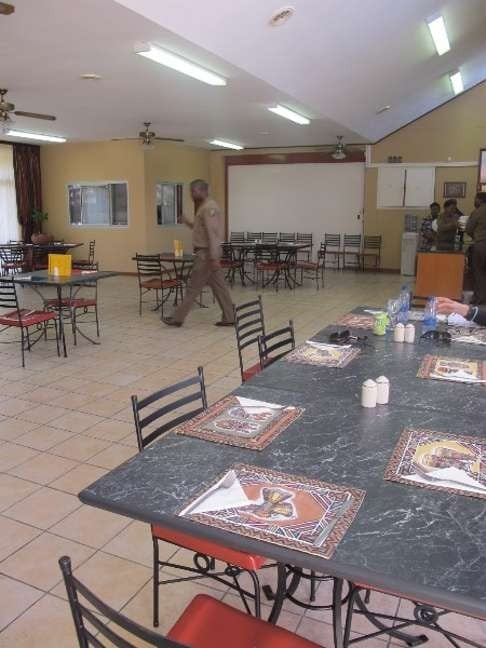
Prison food never tasted so good: the Cape Town restaurant staffed by inmates
The Pollsmoor prison restaurant in South Africa offers the public good food and MasterChef-level presentation at prices far more competitive than the exclusive wine estate across the road
Cape Town is known for the diversity of its restaurants, but the strangest has to be at Pollsmoor Maximum Security Prison, once home to South Africa’s liberation icon Nelson Mandela.
The Pollsmoor Restaurant – slogan: Idlanathi (“Eat with us”) – is open to the public, the waiters are prisoners, and so are most of the kitchen staff.
It is not a tourist attraction like Robben Island, where Mandela spent most of his 27 years in jail and which is now a museum.
It’s just a restaurant in one of the toughest prisons in the country where anyone can go for a meal – unless they would prefer the exclusive wine estate directly across the road.

In contrast, the restaurant was spotlessly clean and almost deserted when AFP visited for lunch, apart from a scattering of burly warders in brown uniforms and one couple from the world outside.
“The service is nice, the food is good and is very cheap,” says Arnold Daniels, a 57-year-old businessman, explaining why he and his wife, Merina, are regulars at the restaurant.
Do they not find it a bit odd to eat a leisurely lunch while thousands of prisoners are cooped up in nearby cells?
“It doesn’t bother us,” says Daniels. “It’s not really strange. It’s very safe and we don’t feel threatened at all.”

But the impenetrable security gates across the French windows are partly hidden by curtains in red and brown with gold piping. And the table mats boast a colourful African mask design.
Fans turn lethargically on the ceiling and pop music is piped continuously into the restaurant.
Wearing prison orange trousers under his apron, the waiter greets guests cheerfully and recommends the steak.
The menu is extensive, ranging from “traditional tripe” and ox head to chicken schnitzel, beef cordon bleu and a seafood platter – which, at 60 rand (HK$30) is the most expensive dish.
The waiter says he was given four years in jail for shoplifting.

He has seven months left to serve and hopes to get a job in hospitality when he is released. The prison would help with a reference, he says.
The food is good, and the presentation worthy of a MasterChef contestant, with herbs and sauces drizzled around the plate.
After the meal, one of the cooks, also in orange prison gear under his apron, steps into an enclosed courtyard alongside the restaurant for a cigarette.
He is serving five years for car theft, although he insists he didn’t steal the car himself, simply bought it off someone else.
“But I’m lucky to only get five years, because car theft is a very serious offence,” he muses.
He describes working in the restaurant as “one of the best jobs in the prison”, but won’t be drawn on life in the cells. “It’s prison,” is all he will say.
Pollsmoor has about 8,000 inmates – twice its capacity – living in conditions described in a report by a judge last year as “deeply disturbing” and “inhumane and appalling”.
Tuberculosis is rife – Mandela contracted TB there – and at least one inmate died last year of leptospirosis, a disease spread by rats.

Across the road is another high-security, electrified fence, marking the borders of the Steenberg wine and golf estate, but this fence is designed to keep people out, not in.
Traditional Cape Dutch-style gabled white buildings with thatched roofs cluster among expansive green lawns and vineyards against a mountain backdrop.
At Catherina’s award-winning restaurant, under umbrellas on the patio, the lunch crowd is dominated by tourists from Europe and the United States.
The menu boasts “sustainable” fish for its ecologically concerned upmarket diners. The fish turns out to be hake – the same as that offered at the Pollsmoor prison restaurant, at four times the price.

.png?itok=arIb17P0)